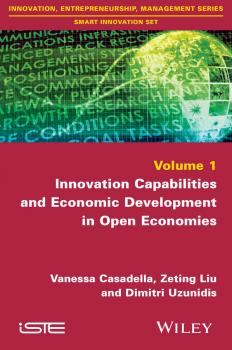ТОП просматриваемых книг сайта:
Dimitri Uzunidis
Список книг автора Dimitri UzunidisАннотация
The innovation capacity-building can contribute to improve the integration of developing countries in the world economy. The economic development has been a much discussed subject of the period after the Second World War until the 1990s. After the implementation of a global regulation system for trade and capital flows in the 1990s, the development economics has almost disappeared in favor of different theories on globalization, on finance and on international trade. The purpose of this book is to show that the innovation capacity building in developing countries is necessary to improve their weight in the world economy and to facilitate their economic ties with northern countries. However, there are important difficulties due to the lack of proactive economic policies. Our aim is to contribute to the revival of the development economics. The issue of improving the well-being of the world population as a whole is highly topical. However, studies neglect the need to give economic, financial, technological and political resources to developing countries to promote their own development. One of the most important means is to strengthen their innovation capabilities that allow them to better integrate into the world economy.
Аннотация
In an uncertain economy where business risk is significant, the company tends to rely more on its environment than to invest, for example, in all steps of technological creation; This can be explained by the fact that investments in the acquisition (ownership) of production resources are less expensive than those implied in the formation of these resources; which also explains the attractiveness (in an open economy) of regions with abundant scientific and technical resources. To understand and analyze the innovation process in order to better design and launch new goods, services and technologies, one has to consider the creative dimension of the individual, the business and the organization in general. In new approaches to innovation, the entrepreneur and the company are analyzed through their skills, and their function of resource generation; Innovation thus becomes endogenous, gradual or radical, integrated in a complex process with many feedbacks and interactions. The innovative organization (small or large) is presented in this book as a dynamic system composed of specific and diverse skills (including those of the contractor, engineers or managers). By acquiring, combining and mobilizing these skills, the innovative agent (entrepreneur or company) can create technological resources and develop relations with its environment. Hence the importance of management in design, implementation, protection of intellectual property as well as of the development of new goods, services and technology, commercial and organizational models.
Аннотация
This book presents the economic theories with regards to the entrepreneur of yesterday and those of more recent years, on which issue research has been developing exponentially since the last third of the 20th Century. Much of this book will be devoted to contemporary theories. This presentation of economic theories of the entrepreneur leads us to wonder about the structural development of the free enterprise system in the short and the long term. The proliferation of entrepreneurial initiatives leads in effect to a profound transformation of modes of production and work, for example under the current phenomenon of uberization economy.
Аннотация
In macro-, meso- and micro-economic systems, the concept of innovation involves a variety of resources and functions. It includes all formal and informal institutions, networks and actors that influence innovation and act as innovation boosters within companies, at the territorial level, at the level of innovation networks or in national economies. This book deals with innovation in a globalized context in terms of the entrepreneur, enterprise, territorial and sectoral systems and national systems of innovation in which collective innovation processes are formed.




